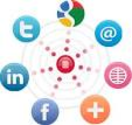-
About
- About Listly
- Community & Support
- Howto
- Chrome Extension
- Bookmarklet
- WordPress Plugin
- Listly Premium
- Privacy
- Terms
- DMCA Copyright
- © 2010-2024 Boomy Labs

 Ted Rubin
Ted Rubin
Listly by Ted Rubin
Via @toddmwilms: After doing this awhile, you get to see the signs of the self-promoter and the quick name-for-themselves artists. You also – with more rarity – get to meet the real deal. So, I was very pleased when he agreed to sit down and chat on topics ranging from the new directions for marketing, listening and relationships, and why “lurking” in social is a good thing. Originally posted at forbes.com

Before becoming the CMO at Collective Bias, I decided that I really wanted to focus on social and have become tired of the C-suite’s focus total on ROI directly from search and banners and affiliate programs. It is time to wake up and realize that social is a shell that should be wrapped around everything we do as marketers. You can easily extend this beyond marketing to areas like your supply chain or HR. So, I took that title believing it expressed a lot better what I am looking to accomplish.

My business partner John Andrews, while serving as Head of Emerging Media at Wal-Mart, came up with the idea of interacting with bloggers to gain insight into real products from real people. It then evolved into a content and media strategy, and then the basis for the Wal-Mart Moms program. He left Wal-Mart and started Collective Bias based on that idea. Collective Bias® is a content marketing media company that drives retail sales through the coordinated creation of social media stories. Through Social Fabric®, a private and proprietary community of over 1,400 influencers with a reach of over 30MM , Collective Bias connects shoppers with the brands and retailers shoppers use in their daily lives to drive conversations on a wide variety of social media platforms. Their stories build consumer engagement and brand loyalty, which leads to increased sales.

Not really the evolution of blogging, more like leveraged and syndicated content as the evolution of media. Bloggers, or micro-publishers are totally democratizing content and creating what truly is “New Media.” I talk to many people who say that they don’t read blogs. When we open up their computer and look at what they do read, 9 out of 10 of their sites are blogs – they just don’t realize because they are so professionally done. Some of the top technology, finance, food and travel information they are reading are from bloggers.

For years, marketing and advertising has been about control. Consumers now have a heavy hand in the control of your brand… it is now “Generation WE,” and not just with Millennials. There is no more total control by marketers. Any person can spread “their” message of your brand through their social graph at such a dramatic pace. And the conversation goes on and on – at an accelerated level and pace.

Absolutely. For years, PR was about control of the message. Say as little as possible and control it yourself. Now, with social media, it has been turned on its head – other people control and can freely comment on or interact with your message and share their feelings or perceptions. Most executives in the C-Suite still want to control, but it is too late – you don’t own it any more.

C-Suite execs go wrong when they don’t want to understand – they still dismiss it. I have conversations with execs who say that it is a waste of time because people are just talking about when they go to the bathroom (chuckle), but what they don’t realize is that was so 2006, it is now 2013 and we have moved well beyond that. People are fundamentally building relationships and aggressively pursuing engaging dialogue within their networks using these social tools. Social media is not a passing fad… and influencers are emerging every day. Welcome to the ‘Age of Influence,’ where anyone can build an audience and effect change, advocate brands, build relationships and make a difference.
Secondly, they miss when they don’t encourage their employees to actively build on these channels. This is another version of control – wanting to centrally control the message. But where this is a miss is when you don’t utilize some of your best assets within your company – your people – to help build and enhance your brand and be dynamic advocates for your products and services. This also leads to a fundamental loss in your opportunities and ability to listen.

What is so scary for companies about listening is that they have to hear what is being said about them and that forces a reaction. What is so great – and so revolutionary – about social media is that it truly gives the opportunity for every person to have a voice and an impact on what they like, don’t like, love, etc. about the products and services they use. Previously, companies only had a few channels to receive that kind of communication – big customers, or analysts or some partners. Now, everyone has a voice.
If you allow your employees to listen and really hear what is being said, you actually give them the ability to build relationships with your brand’s supporters and your detractors. This is your ability to build digital relationships.

Absolutely, this is where the idea of relationships has the same importance as before – that old notion of “people do business with people they have a relationship with” is still true – but now we can scale it. We can now interact with people at scale. Before you were limited in the number of people you could meet or pick up the phone to call or fax to. Even email was limiting because it was one way and sometimes you could not even reply to some emails. Very often extremely frustrating for consumers.
I hear ‘What do you mean scale – I mean, how many tweets can you answer?’ all the time. What I see happening is that you will gain a lot of traction with the so-called “lurkers” – the silent observers – in your communities and not just with the people you are directly engaging with. Lurkers are engaging with you by watching how you interact with your communities. These are some of the most important people in your network.

Absolutely. Look at it this way – we use the cocktail party analogy for social media all the time. If you went to a cocktail party and everyone was doing all the talking and no one was listening, nothing would ever get accomplished, because no one would hear anything. You need those folks who listen as a part of that community… for brands very often they are the most valuable, and most often they share in other places… via different social platforms, and with good old face-to-face word of mouth, still a VERY powerful medium.

Relationships are the new currency… the digital revolution has turned marketing on its head (or so some would have you believe). Just when you thought you had a handle on measuring ROI (Return on Investment), it seems that social media has thrown a monkey-wrench in the whole business. But has it really?
In some ways it has, because traditional formulas for calculating ROI really work better for advertising initiatives—and social is more about communication than it is about advertising. It’s more about developing relationships and nurturing them, which oddly enough is almost a full-circle back to the “before mass advertising” days of face- to-face sales and marketing. In those days we actually met our customers, talked to them and got to know them personally. What a novel concept!
Mass advertising (while it has its place) moved us away from our face-to-face roots, but social is bringing us back. It’s how people today like to receive information and make buying decisions. They talk to each other via social channels. They seek information there, and they want to interact with businesses there directly or vicariously via the interaction of others. If you want to continue reaching your prospects in this social media age, your marketing focus needs to return to building relationships.
ROR isn’t a new concept in marketing; it’s the value that accrues over time through loyalty, recommendations and sharing. It’s a back-to-basics measurement that calculates how well brands create authentic connection, interaction and engagement with customers—and it’s time to re-learn the concept.

I have four personal twitter handles… @TedRubin, @RonR, @Parentng, and @justb_nice. What it comes down to is that I am a frustrated author (chuckle). So I use twitter to express my ideas and to share them for feedback. Where others might use it for just promoting their or other’s links, I use it like a digital whiteboard. I sketch out my ideas and thoughts to gain reactions and insights from my community. This goes back to my idea of truly listening and really hearing what is going on.

Yes, I don’t think there is a right way or wrong way to use these tools. I hear from a lot folks who are nervous to try these out because they are afraid of making a mistake. My guidance is this: do what you want to do. Does it work for you? Great! If not, try something else until you get the result you are looking for. It is really that simple. Just because I say – or some “guru” says here are the “Top 10 things to do on Twitter” doesn’t mean they are the right things for you to do on twitter.
*My philosophy is that Twitter’s an amazing networking, communication and outreach tool and platform that leads into other forms of social sharing. Do not underestimate the value of those who simply lurk, search, and absorb content.

Yes. Look, everyone wants to know that what they are doing is working. Our problem is that when digital came along in the ’90s we tried to measure it just like we did everything before it. We applied the old standards of things like “impressions” on that new medium. We have continued that trend with social and are trying to measure it the same way we do traditional digital, and we often make the mistake of thinking it is the same as all digital advertising just because it lives on digital platforms. This is one of the biggest headaches for marketers today. Execs want measurements they can’t get – or don’t mean what they think they mean – and marketers struggle to find ways to collect those measurements.
“Success” in a social campaign, and an annualized social media calendar, should be determined by the goals for the campaign and an overall long-term strategy… we like to use the term “Conditions of Satisfaction.” Far too often, companies start a campaign simply with the goal of having a “social” campaign, because that’s something they feel like they need to do or have been pitched by an agency. Most Social Marketing “experts” flock to those kinds of clients, and then pick some random metric as success.
In our world of coordinated creation of social media stories at Collective Bias, there are typically two kinds of success, or ROI, on social campaigns – Cost Mitigation, and Sales Increase. And we believe there is a Return on Relationship (ROR) fostered by all brand relevant content and communication… simply put the value that is accrued by a person or brand due to nurturing a relationship. ROI is simple $’s and cents, ROR is the value (both perceived and real) that will accrue over time through loyalty, recommendations and sharing.
